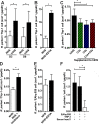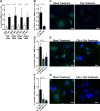Anaphylatoxin signaling activates macrophages to control intracellular Rickettsia proliferation
- PMID: 37855623
- PMCID: PMC10714731
- DOI: 10.1128/spectrum.02538-23
Anaphylatoxin signaling activates macrophages to control intracellular Rickettsia proliferation
Abstract
Pathogenic Rickettsia species are extremely dangerous bacteria that grow within the cytoplasm of host mammalian cells. In most cases, these bacteria are able to overpower the host cell and grow within the protected environment of the cytoplasm. However, a dramatic conflict occurs when Rickettsia encounter innate immune cells; the bacteria can "win" by taking over the host, or the bacteria can "lose" if the host cell efficiently fights the infection. This manuscript examines how the immune complement system is able to detect the presence of Rickettsia and alert nearby cells. Byproducts of complement activation called anaphylatoxins are signals that "activate" innate immune cells to mount an aggressive defensive strategy. This study enhances our collective understanding of the innate immune reaction to intracellular bacteria and will contribute to future efforts at controlling these dangerous infections.
Keywords: Rickettsia; anaphylatoxin; complement system; intracellular bacteria; macrophage.
Conflict of interest statement
The authors declare no conflict of interest.
Figures





References
-
- Biggs HM, Behravesh CB, Bradley KK, Dahlgren FS, Drexler NA, Dumler JS, Folk SM, Kato CY, Lash RR, Levin ML, Massung RF, Nadelman RB, Nicholson WL, Paddock CD, Pritt BS, Traeger MS. 2016. Diagnosis and management of tickborne rickettsial diseases: rocky mountain spotted fever and other spotted fever group rickettsioses, ehrlichioses, and anaplasmosis — United States. a practical guide for health care and public health professionals. MMWR Recomm Rep 65:1–44. doi:10.15585/mmwr.rr6502a1 - DOI - PubMed
MeSH terms
Substances
Grants and funding
LinkOut - more resources
Full Text Sources
Miscellaneous

